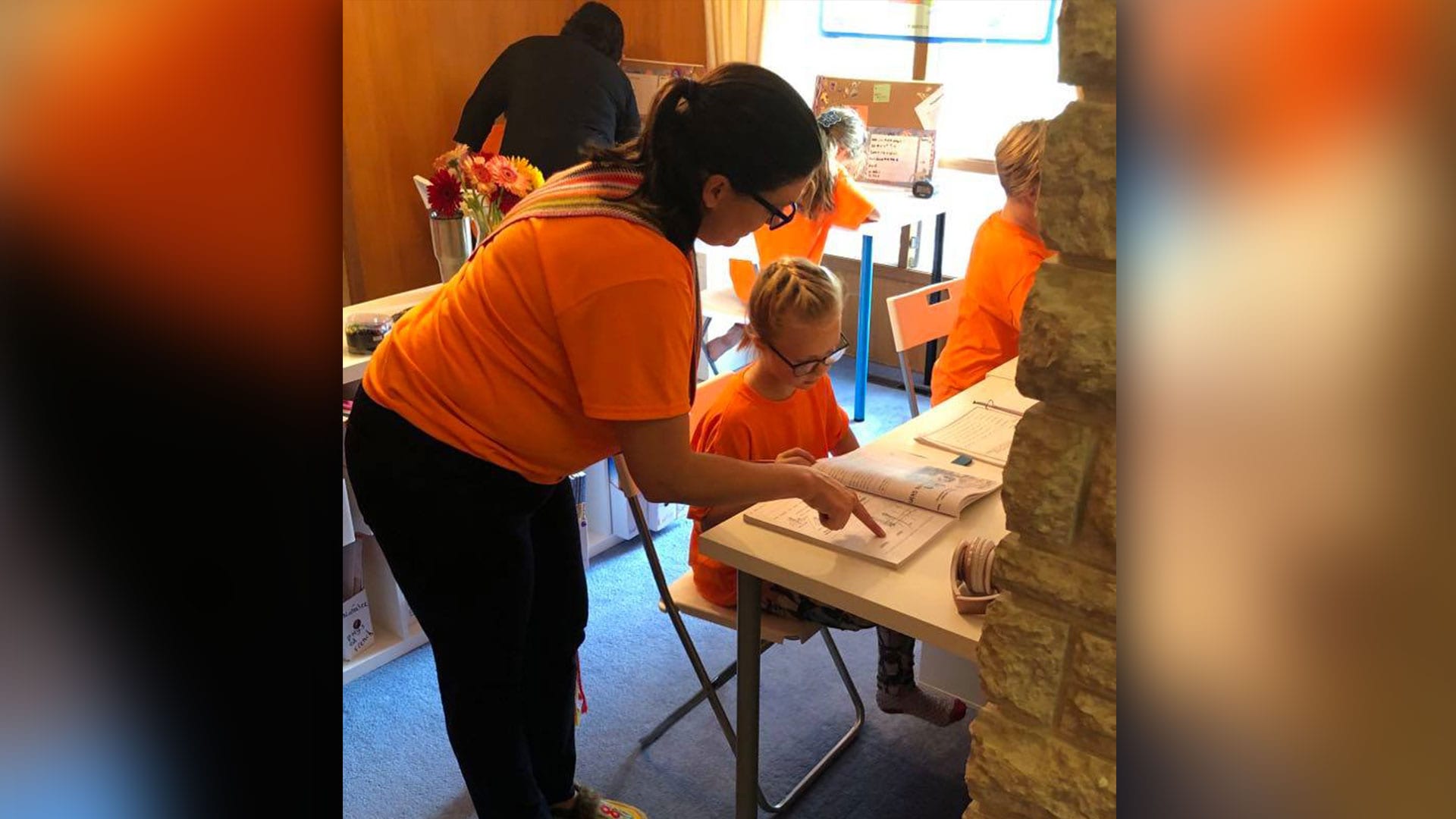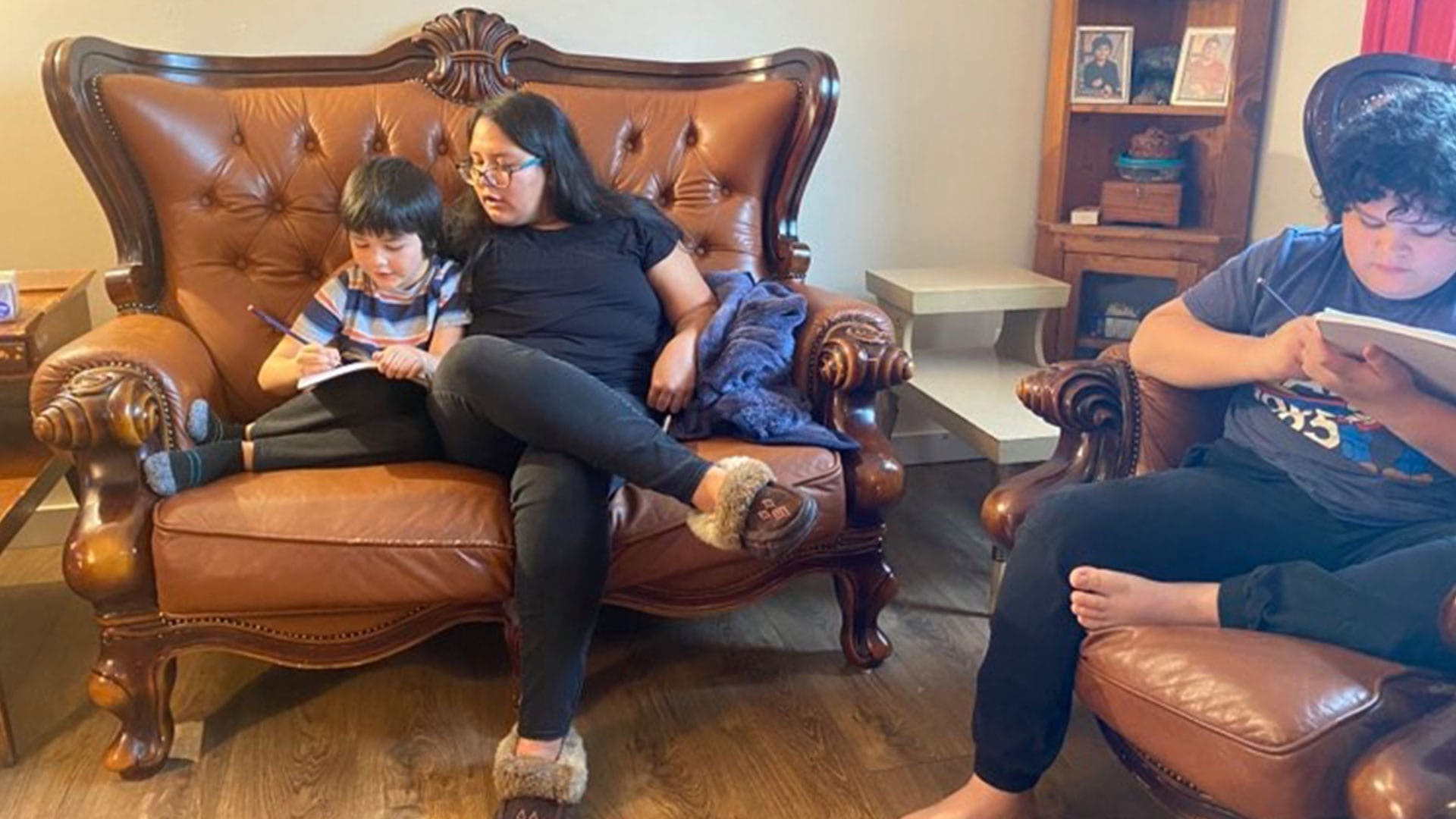Homeschooling is the new way kids are learning because of the COVID-19 pandemic making the school year look a little different.
As cases continued to rise in Manitoba, Laura Forsythe, along with her sister Sarah Foster, chose to homeschool their kids together.
Forsythe said she felt the need to come up with an alternative plan for the start of the school year.
“[My sister and I] didn’t feel comfortable sending our children to be part of the social experiment that they’re having currently in our provincial schools,” Forsythe told APTN News.

The Métis family has six kids in total ranging from grades three to seven.
Five days a week Forsythe takes her daughter to her sister’s home in Winnipeg, which has been converted into a makeshift classroom with each child getting their own desk and cubby space that holds their classwork.
For Forsythe, it was important to keep things as normal as possible during these uncertain times.
“We try to emulate the school day as much as we can,” she said.
The day starts at 9 a.m. and goes until 3:30 p.m. and includes two recesses and a lunch break. The kids take classes in social studies, math, physical education, French and dance.
On the day APTN visited them, the family was learning about various trees and leaves found in the backyard.
When Manitoba cancelled in-person classes in the spring it gave the family the chance to see where each kid was at academically. Forsythe and Foster are now able to provide specialized classwork as they need to.
“[The kids] are at their own pace. We don’t need to rush to go with the herd. They get to slow down and really understand the concept before moving onto the next thing,” said Forsythe.
The school day also includes incorporating Métis history and cultural teachings with help from the Manitoba Metis Federation (MMF).
The federation recently launched its own homeschool support program for Métis families. They have hired their own teachers and tutors to facilitate online schooling separate from what the province is offering.
“We’re there to help them. We’re not there to tell them what to do. We’re there to help them make a decision that they feel comfortable with and that they’re happy with,” said MMF Minister of Education Joan Ledoux.
There are 117 youth registered with the MMF’s program, according to Ledoux.
Approximately 85 kilometres away in the small city of Portage la Prairie Amber Beaulieu is homeschooling her twin daughters as well as her younger brothers with help from her mother.

Monday mornings begin with journaling to tackle spelling and sentence structure. The kids write about what they did on the weekend and what they are looking forward to for the week ahead.
Part of the day includes incorporating lessons not always found in the history books.
“I found a lot of the curriculum was still very problematic…a lot of it was historically inaccurate and I found that Indigenous people were very underrepresented,” said Beaulieu.
A red dress hangs in the window of the home as a symbol to honour missing and murdered Indigenous women and girls. The day before, Oct. 4, is a national day that recognizes MMIWG across Canada.
There’s a big emphasis on land-based learning as well as learning the Ojibway language.

This is the first time it’s been included in the kids classwork.
“We were teaching them the basics but I feel like this is really an opportunity for us to teach them how to be fluent in their own language,” said Beaulieu.
Converting to homeschooling was a difficult process in the beginning for Beaulieu. She says there is little direction from the province, which can make it overwhelming for parents, and a lack of funding available for families can make it inaccessible for some.
Both Beaulieu and Forsythe are still working while homeschooling. They credit flexible schedules and family support with allowing them to do so.
Despite the hectic schedules both families stand by their decisions to homeschool.









